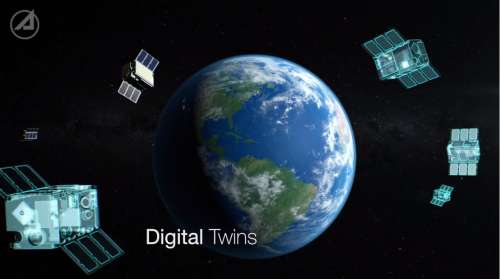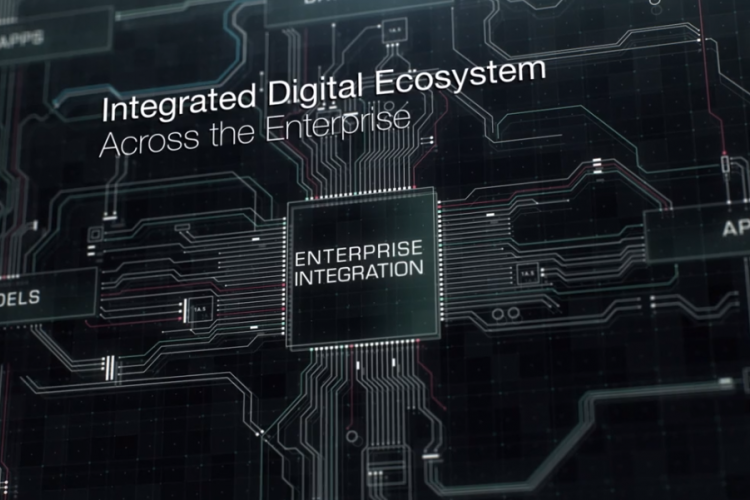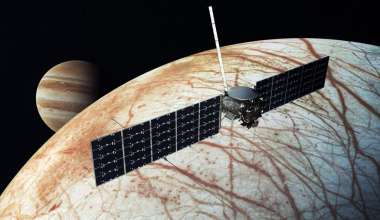The modern space enterprise is transforming at an unprecedented rate. The next era of innovation and outpacing the threat will require space systems and operators to work faster, smarter and more connected than ever before. To meet that challenge, a massive paradigm shift toward digital engineering principles and technologies is already underway.
The Aerospace Corporation is advancing the concepts, capabilities, and strategies that leverage an integrated digital approach to revolutionize how the hardest problems across the space enterprise, and other complex enterprises, can be solved. Adopting a digital-first approach enables for more opportunities to integrate across the enterprise and fosters better multi-domain collaboration, scalable agile architecture and informed acquisition planning.
The foundation of digital engineering is built upon the use of authoritative data, model-based approaches, and integrated analytical tools to create fully connected digital ecosystems, enabling for full domain awareness, repeatable model-driven processes, dynamic simulation environments, and real-time testing and implementation.
“At its most fundamental, digital engineering is the application of modern technologies and processes at an enterprise scale to perform, connect and integrate traditional engineering functions in new ways,” said Todd Nygren, Senior Vice President for Aerospace’s Engineering and Technology Group. “It represents a transformation of how Aerospace does business that spans everything from systems acquisitions to mission assurance to enterprise integration.”
In an integrated digital ecosystem, validated data across various disciplines is stored in repositories and used as a central reference, enabling digital simulations that evolve and follow hardware and software systems throughout the lifecycle to replace traditional static models and more efficiently discover and resolve emerging concerns, threats, and risks. This digital ecosystem eliminates legacy information silos and enables better strategic integration across the enterprise at scale, modernizing traditional engineering functions that improve efficiency and speed and enhance capabilities.
“Digital engineering is simply a modern approach to execute all of our engineering processes and analyses that we do within Aerospace in support of our customers,” said Dean Bucher, Principal Director of Digital Engineering Integration at Aerospace. “It’s taking everything we do and transforming every aspect of our jobs so that it is all based on underlying repositories of data and models that is authoritative, validated, used and reused, and updated in seamless ways. Anything we produce out of any kind of engineering analysis will go straight back into the repositories of data and analyses to be made available for people to use and reuse for their own purposes and engineering functions.”
Organizations across the space enterprise, and other civil and commercial enterprises, recognize digital engineering as the future of technology development, systems acquisition, and operations. In the United States Space Force (USSF) Vision for a Digital Service digital engineering is one of four key focus areas necessary to realize the Digital Space Force Vision, enabling “all personnel to act as ‘intrapreneurs,’ embracing digital technology, driving innovation, and pushing boundaries in how processes and operations are executed throughout the organization.”

As an example, engineers operating in a digitally integrated environment will construct “digital twins”, which are digital replicas of an actual space asset that can then be used to test, analyze and even implement updates and upgrades before having to touch the hardware. Drawing from authoritative sources of data, engineers can better assess different scenarios and potential outcomes through simulations that more closely represent real-world environments. Those digital models would then be reused and updated as a point of departure going forward, saving time and streamlining future processes for design, upgrades and improvements.
“The promise of digital engineering is really to streamline acquisition and address the growing complexity of the space enterprise,” Bucher said. “We will soon be working off a set of digital models and data with a more seamless connection between the government and industry partners that are developing complex systems and their associated digital twins.”
Going InDEPTH Into Digital Engineering
Engineers at Aerospace, anticipating this shift to digital engineering across the enterprise, launched a digital engineering test bed, known as Integrated Digital Engineering Prototype Testbed Hub (InDEPTH), over two years ago. This foresight has allowed Aerospace to develop a deeper understanding of the capabilities and methodologies for implementing a digital-first approach to the space enterprise.
InDEPTH leverages digital engineering principles to enable unified data integration and analysis across disparate systems and enterprises. Aerospace recently leveraged the Space-Based Environmental Monitoring (SBEM) mission area as an exemplar to demonstrate the power of InDEPTH and digital engineering. The team ingested models and data from three agencies into the InDEPTH testbed environment to create a case study using the same data available to analysts, engineers, and decision makers, managed within a digital engineering paradigm, to allow leaders access to insights from across the enterprise. The team is now looking at pilot programs that will address the needs of the USSF, NASA, NNSA, the Intelligence Community, and other organizations.
It is an early glimpse at the capabilities of digital engineering and the path ahead.
“This is a big culture shift to move the entire industry in a direction where everything is driven by digital connections to data, models, and software that will be continually updated and maintained through everything we do," Bucher said. "This is a marathon, not a sprint, and it may be a decade or more before we see the full transformation to digital engineering at an enterprise scale."









